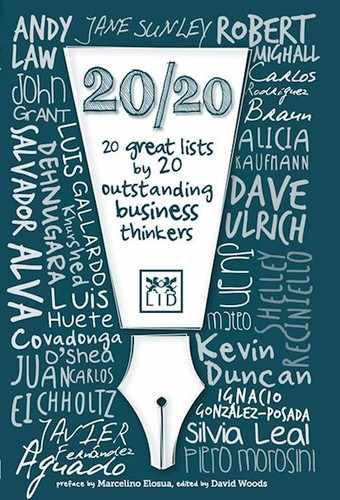4.
BOLDNESS AND VULNERABILITY
“Freedom lies in being bold.”
Opening up to the unknown requires boldness. “Even though the future might not be clear, leaders still need to be bold in decision-making,” argues Ben Hughes, Deputy CEO of the Financial Times. When the FT developed the FT.com app, it decided not to distribute the app through the Apple store. This decision was not made to avoid Apple’s 30% cut of revenue but rather to ensure that the FT could own and control its own data. It was a bold move as Apple was dominant in the app space.
As a result the FT built its own app outside the Apple platform and made it available on the Android platform. It proved very successful. Ben believes that in the end Apple respected the FT for taking such a stand – it was a bold thing to do at the time.
“I think those in leadership need to model boldness in helping their staff to thrive while entering into the unknown. While I take wide counsel and absolutely seek advice on strategic or important decisions, once made I think you need to be confident and that your body language also has to reflect this. This is particularly important in changing times.”
Ben talks about the FT brand being a “confident” brand, not an “arrogant” brand. “I remember when I first joined the FT over 25 years ago, then we were an opinionated brand. I saw the brand evolve to one of style and class, not arrogance. I think this takes boldness in decision-making.”
One way the FT embraced the recent uncertainty in the industry was to experiment with new streams of business. The FT leadership team needed to make bold decisions in changing the business and reducing circulation, even though they didn’t know where this would lead. One example is the conference business, which was expanded and subsequently became very successful. The FT also acquired companies in the new digital and subscription space, such as Money Media and Executive Appointments. The luxury business was expanded, creating exclusive events such as the “Race to Monaco” which connected the readers in novel ways. This resulted in keeping advertising rates strong, even if print circulation had decreased.
One of the most inspiring speakers Ben has heard on going into the unknown was the mountain climber Joe Simpson, who was featured in the film Touching the Void. “He faced a decision to climb up, or to go down into a crevice – down into the void. This bold decision to go down into the unknown may well have saved his life. I think as leaders we also face a choice, but that doing nothing or going back to business as usual is not an option.”
When Anna Simioni received the feedback from her team, she was struck by how she was perceived – invincible, without doubts and fears, too independent and too self-confident. She realized that this image she had unconsciously created was dis-empowering to her staff and was getting in the way of them taking responsibility for their challenges and being able to thrive.
She decided to create a workshop to discuss the data with them. By making herself the focus of the meeting and giving her staff the opportunity to discuss the data, she enabled people to begin to see her in a new light. That workshop was the beginning of a long, tough journey, where Anna started to drop the ‘defence’ of competence and control and enable her team to change roles. Seeing her in all her vulnerability and humanity facilitated their capacity to improve their competence.
“I cannot say that it was easy to make these changes. What was most difficult for me was the concept of vulnerability because at that time I felt I was strong and in a good place, not vulnerable. Initially, I felt that I needed to “play” vulnerable even though I did not feel this way. Over time since the survey, life has made me vulnerable. I now start to observe myself and notice when I am protecting myself, aiming to allow myself not to be shielded."
Anna displays a flexibility of character in line with Keats’ “negative capability” in her ability to tolerate the loss of an important part of herself (the powerful, all-competent part) and the capacity to recreate herself as someone more open to Not Knowing.
Rather than seeing vulnerability as a weakness, it can be a source of strength and courage as we step into the unknown. A Harvard Business Review study shows that witnessing the courage of others embracing their vulnerability is inspiring and can have a positive “snowball” effect.105 The study followed the managing director of a large German corporation who was struggling to change his directive leadership style. Instead of creating an illusion of invulnerability, he chose to acknowledge his current shortcomings. He stood up at an annual meeting of his top 60 managers and admitted he did not have all the answers, asking people to help him make the necessary changes.
Openly embracing his vulnerabilities was perceived as a respectable move of bold leadership by his team. Innovation and team initiative measurably increased and the company as a whole flourished as a result.116
These changes do not happen overnight, though. It may be hard to shake off the image others have of us and be perceived differently in a system, especially if those perceptions are entrenched. It is challenging changing roles when people’s view of us is fixed. People will expect us to be predictable and behave as we’ve always behaved. Anna Simioni found that due to the historical legacy of her role, people still clung to their image of her, even when she changed her behaviour. It took her some time and persistence to re-establish her role as someone who shared power and worked collaboratively with others.
